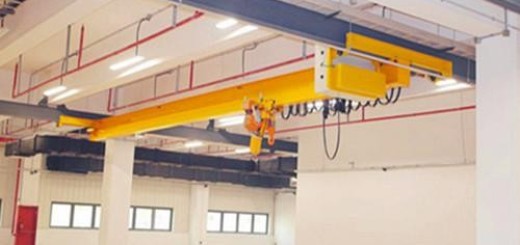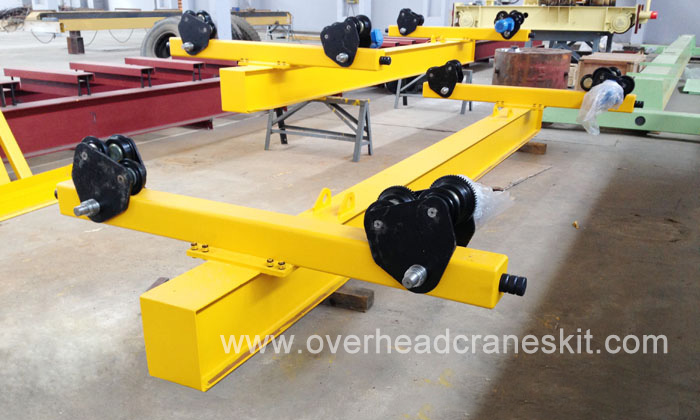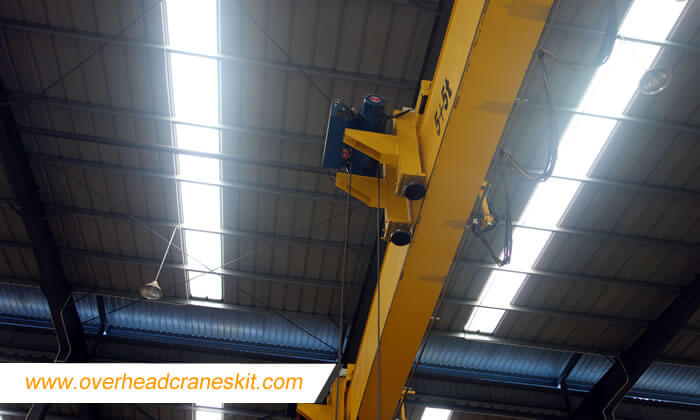Regulations for the safe use of bridge cranes
Bridge type cranes generally refer to bridge cranes, which are mainly used in workshops and workshops. Enterprises must ensure the safe operation of cranes during use. The editor introduces the regulations for the safe use of under-bridge cranes.
The use of bridge cranes must comply with operating regulations
- Before driving, turn all the control handles to the zero position, close the doors and windows, and start the car after ringing a bell.
- The crane should be started smoothly and should not be started at a high level. When manipulating the controller, it must be done according to the grade. When the hook is rotating, it is not allowed to lift to prevent the wire rope from hopping.
- When the crane or trolley is running close to the end point, the speed should be reduced. It is strictly forbidden to use the end point switch as a stopping method, and it is also not allowed to use the reverse car to achieve the purpose of braking.
- During the operation, the driver shall ring the bell for the following operations as required:
(1)When lifting and lowering heavy objects, when driving large and small vehicles;
(2)When the crane is passing or driving in a place where the line of sight is not clear;
(3)When the crane runs close to another crane on the same span track;
(4)When lifting heavy objects and approaching people. - For cranes with double hooks (main and auxiliary hooks), it is not allowed to use two hooks to hang two objects at the same time. The inoperative hook should be opened to a position close to the upper limit height, and hanging slings are not allowed.
- For cranes with main and auxiliary hooks, when the main and auxiliary hooks are switched or the heights of the two hooks are close, they should work individually to prevent the two hooks from colliding.
- When there are multiple cranes working in the same span, the distance between the two cranes should be more than 1.5m. When it is necessary to be close due to work, it should be approved by the neighboring aircraft, but the minimum distance should be more than 0.3m. It is not allowed to use one crane to push another crane to work.
- When changing the direction of operation during normal work, the control handle should be pulled to the “zero position”, and the mechanism should be switched on after the mechanism has completely stopped rotating.
- For ground-operated cranes, the following should be done:
(1)The operator should face the lifting hook to operate, and it is not allowed to operate the cable and the lifting wire rope cross operation;
(2)The traveling route of the operator should be consistent with the traveling route of the crane, and the crane should not be operated backwards;
(3)It is not allowed to start three sets of institutions at the same time;
(4)It is not allowed to manipulate cranes whose operating speed exceeds 45m/min;
(5)It is not allowed to operate two or more cranes at the same time. - If it is a grab or electric disk crane, the following regulations should also be observed:
(1)When the grab or electric disc is working, ensure that the sling carrying cable and the hoisting steel wire move at the same speed. Do not make the grab or electric disc rotate, so as to avoid accidents when the cable and the wire rope are entangled with each other;
(2)It is not allowed to use electric disks to lift workpieces with a temperature above 2000C;
(3)It is not allowed to grab a whole piece of object with a grabbing bucket to avoid slippage of the object during lifting;
(4)When it is found that the electric disk has residual magnetism (some heavy objects cannot be disconnected from the electric disk after the power is turned off), it should be shut down for maintenance. - Strictly use the crane within the working conditions specified in the crane operation manual. Lifting molten metal, toxic materials, and flammable and explosive materials should meet relevant requirements.
- After the lifting operation is completed, the crane is driven to the designated place, the trolley is driven to the end of the cab (the side without the cab is the non-slip line side), and the hook is raised to close to the upper limit position (the grab, electric disk and other spreaders are placed Ground), all the controllers are pulled to the “zero position”, cut off the power, and cleaned and wiped to keep it clean. For open-air cranes, they should be driven to the parking position when not working, and anchored reliably.




